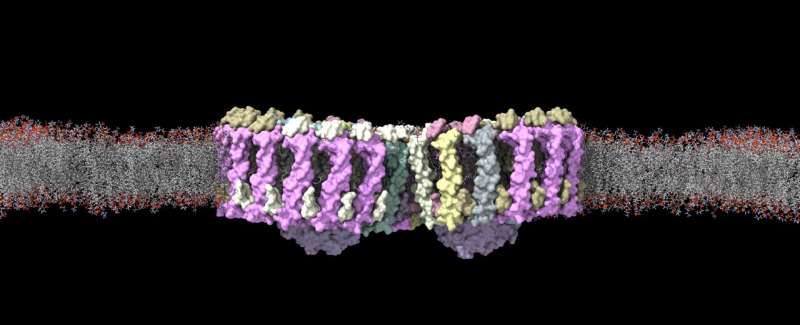Researchers at the University of Liverpool have uncovered remarkable insights into the intricate world of bacterial photosynthesis, shedding new light on how these microscopic organisms harness solar energy. This groundbreaking study, published in Science Advances, not only advances our understanding of this ancient biological process but also holds the potential to inspire innovative clean energy solutions. The researchers’ high-resolution imaging of the key photosynthetic protein complexes in purple bacteria reveals unique structural features that differentiate them from their close relatives, highlighting the remarkable diversity of photosynthetic systems in the microbial world.

Unlocking the Architectural Elegance of Bacterial Photosynthesis
The study’s focus on the photosynthetic reaction center-light-harvesting complexes (RC-LH1) of the model organism Rhodobacter blasticus has yielded unprecedented insights. By capturing detailed images of both monomeric and dimeric forms of these membrane protein supercomplexes, the researchers have uncovered unique structural characteristics that distinguish R. blasticus from its close relatives.
A standout feature is the flatter conformation of the RC-LH1 dimer in R. blasticus, which provides the foundation for a specific membrane curvature and energy transfer efficiency unique to this bacterial species. Furthermore, the absence of a particular protein component, PufY, in the RC-LH1 structure is compensated by additional light-harvesting subunits that create a more enclosed LH1 structure, affecting the electron transport rates of the entire complex.
Harnessing the Diversity of Photosynthetic Mechanisms for Clean Energy Innovations
The systematic investigation, integrating structural biology, computer simulations, and spectroscopic studies, offers a wealth of insights into how bacterial photosynthetic complexes assemble and mediate electron transfer – crucial processes for energy production. Lead researcher Luning Liu emphasizes the importance of these findings, stating, “Our findings demonstrate the structural diversity of photosynthetic complexes, even among closely related bacterial species. This variability likely reflects different evolutionary adaptations to specific environmental conditions.”
This remarkable diversity in photosynthetic mechanisms observed among purple bacteria holds immense potential for future clean energy innovations. By revealing the natural strategies employed by these microorganisms, the researchers aim to inspire the design of more efficient light-harvesting and energy transduction systems or even artificial photosynthetic cells.
Unlocking the Mysteries of Life’s Evolution through Bacterial Photosynthesis
Beyond the immediate applications in clean energy, the study of ancient bacterial photosynthesis also holds significant implications for understanding the evolution of life on Earth. As the lead researcher notes, “Studying ancient bacterial photosynthesis also helps to understand the evolution of life on Earth.” The ability of these microorganisms to convert light into energy through a process akin to plant photosynthesis is a remarkable testament to the adaptability and resilience of life.
By unraveling the intricate mechanisms behind bacterial photosynthesis, researchers can gain valuable insights into the origins and development of this crucial biological process. These findings not only advance our scientific understanding but also open up new avenues for exploring the evolutionary pathways that have shaped the diverse forms of life on our planet.
